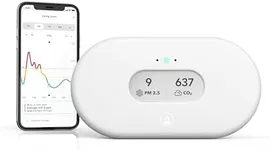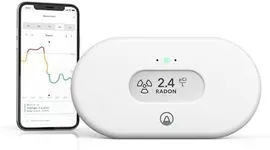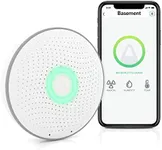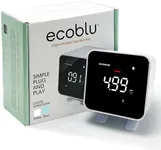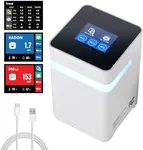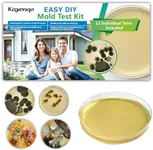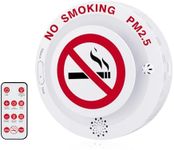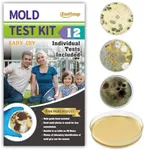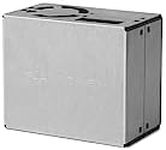Buying Guide for the Best Radon Detectors
Choosing the right radon detector is crucial for ensuring the safety and health of your home or workplace. Radon is a radioactive gas that can cause serious health issues, including lung cancer, if it accumulates in high levels. A good radon detector will help you monitor and manage radon levels effectively. When selecting a radon detector, consider the following key specifications to find the best fit for your needs.Detection MethodThe detection method refers to how the radon detector measures radon levels. There are two main types: passive and active detectors. Passive detectors, such as charcoal canisters and alpha track detectors, do not require power and are typically used for short-term or long-term testing. Active detectors, like continuous radon monitors, require power and provide real-time readings. If you need ongoing monitoring and immediate results, an active detector is ideal. For occasional testing, a passive detector may suffice.
AccuracyAccuracy is the degree to which the detector's readings reflect the true radon levels. This is important because inaccurate readings can lead to either unnecessary alarm or a false sense of security. Accuracy is often expressed as a percentage. Higher accuracy detectors (within ±10% of the actual radon level) are preferable for reliable monitoring. If you need precise data for health reasons or regulatory compliance, opt for a detector with high accuracy.
SensitivitySensitivity refers to the detector's ability to detect low levels of radon. This is important for early detection and prevention of radon buildup. Sensitivity is usually measured in picocuries per liter (pCi/L). Detectors with higher sensitivity can detect lower concentrations of radon, which is beneficial for ensuring safety. If you live in an area known for low radon levels but want to be cautious, choose a detector with high sensitivity.
Response TimeResponse time is the duration it takes for the detector to provide a reading after exposure to radon. This is important for timely detection and action. Short-term detectors typically provide results within a few days to weeks, while long-term detectors may take several months. Continuous radon monitors offer real-time readings. If you need quick results, opt for a detector with a short response time. For long-term monitoring, a longer response time may be acceptable.
Ease of UseEase of use refers to how simple it is to set up and operate the radon detector. This is important for ensuring that you can effectively monitor radon levels without technical difficulties. Some detectors require professional installation, while others are plug-and-play. If you prefer a hassle-free experience, choose a detector that is easy to install and use. Consider features like digital displays, mobile app integration, and user-friendly interfaces.
Data Logging and ReportingData logging and reporting capabilities refer to the detector's ability to record and present radon level data over time. This is important for tracking trends and making informed decisions about radon mitigation. Some detectors store data internally, while others offer cloud storage and app integration. If you need detailed records for analysis or regulatory purposes, choose a detector with robust data logging and reporting features.
Calibration and MaintenanceCalibration and maintenance refer to the need for periodic adjustments and upkeep to ensure the detector's accuracy and functionality. This is important for long-term reliability. Some detectors require regular calibration by the manufacturer, while others are maintenance-free. If you prefer a low-maintenance option, choose a detector that requires minimal calibration and upkeep. However, for the most accurate readings, be prepared to follow the manufacturer's calibration schedule.
